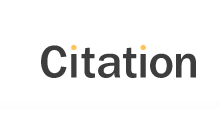Navigating the new Attendance Codes for the 24/25 Academic Year
Maintained schools and academies will need to implement some changes to how they record attendance from the 19th of August 2024 to align with new guidance from the Department for Education (DfE). The changes to the ‘Working together to Improve Attendance’ guidance, aim to provide a more nuanced understanding of student engagement and absence and include updated attendance codes for the 24/25 academic year. Let's delve into the specifics of these changes and their implications for schools, educators, and students.
 Key Changes in Attendance Codes:
Key Changes in Attendance Codes:
- Revised Meaning for Code B: The description for code B has been updated by the DfE to 'Attending any other approved educational activity’, replacing the previous description of 'Educated off-site (not Dual Reg)'. However, the statistical meaning of 'Approved Educational Activity' remains unchanged.
- Introduction of new codes C1 and C2: Two new codes, C1 and C2, have been added. Code C1 is now used to record 'Leave of absence for the purpose of participating in a regulated performance or undertaking employment abroad', while code C2 is for 'Leave of absence for a compulsory school age pupil subject to a part-time timetable'. Schools can still use code C for 'Leave of absence for exceptional circumstance' with statistical meaning 'Authorised absence' at their discretion. However, according to the DfE's guidance 'generally, a need or desire for a holiday or other absence for the purpose of recreation would not constitute an exceptional circumstance'.
- Removal of Code H: Code H for ‘Family Holiday (agreed)’ has been removed.
- Replacement of code J: Code J for ‘Interview’, statistical meaning 'Approved Educational Activity' has been replaced by Code J1 with the statistical meaning of 'Authorised absence'
- New code K: New code K has been introduced for 'Attending alternative provision arranged by the LA' with the statistical meaning of ‘Approved Educational Activity’
- New code Q: New code Q has been introduced for 'Unable to attend the school because of a lack of access arrangements' with the statistical meaning of 'Attendance not required'
- New Codes Y1 to Y7 to replace code Y: A series of new codes (Y1 to Y7) have been introduced to expand on & replace the previous Y code which denoted ‘unable to attend due to exceptional circumstances’ as listed below
-
- Y1 - 'Unable to attend due to transport normally provided not being available' (i.e. where the school is not within walking distance as per specified criteria)
-
- Y2 - 'Unable to attend due to widespread disruption to travel' (i.e. disruption caused by a local, national or International emergency)
-
- Y3 - 'Unable to attend due to part of the school premises being closed' (i.e where the pupils affected cannot practicably be accommodated in the remaining open parts of the school)
-
- Y4 - 'Unable to attend due to the whole school site being unexpectedly closed' (i.e. non-planned closures affecting all pupils)
-
- Y5 - 'Unable to attend as pupil is in criminal justice detention' (i.e. pupil is in police detention, remanded to youth detention, awaiting trial or sentencing or detained under a sentence of detention)
-
- Y6 - 'Unable to attend in accordance with public health guidance or law'
-
- Y7 - 'Unable to attend because of any other unavoidable cause' (i.e. where pupils can't attend due to any other unavoidable cause not covered by the other Y codes. The nature of the other cause also needs to be recorded)
Implications for Schools and Headteachers:
- Enhanced Precision in Attendance Monitoring: The updated codes allow for more detailed tracking of student attendance and absence. Headteachers can now accurately categorize various forms of engagement and absence, facilitating a more comprehensive understanding of student participation.
- Improved Compliance and Accountability: With clearer delineations of attendance categories, schools can ensure greater compliance with regulatory requirements and accountability in monitoring student attendance. The introduction of specific codes for different circumstances reduces ambiguity and supports transparent & accurate reporting.
- Challenges in Implementation: While the changes offer benefits in terms of clarity and precision, their successful implementation may pose challenges for schools. Headteachers and administrative staff will need to familiarize themselves with the updated codes and ensure consistent application across all attendance records.
- Promotion of Inclusivity and Equity: The revised attendance codes reflect a commitment to inclusivity and equity by recognizing diverse circumstances that may affect student attendance. By acknowledging and accommodating various challenges, schools can better support the needs of all students, regardless of their individual circumstances.
Conclusion:
The changes to attendance codes for UK schools, effective from the 19th of August 2024, reflect the increased focus post-pandemic on school attendance and it’s well-established link to pupil outcomes. By adopting these statutory guidelines, schools will enhance their ability to monitor and support student attendance effectively, contributing to improved educational outcomes and student well-being. As schools navigate the implementation process, collaboration between educators, administrators, parents, and policymakers will be essential to ensure the successful transition to the updated attendance framework.
Chris Fagan, Head of IT and Business Applications - The Education Space




